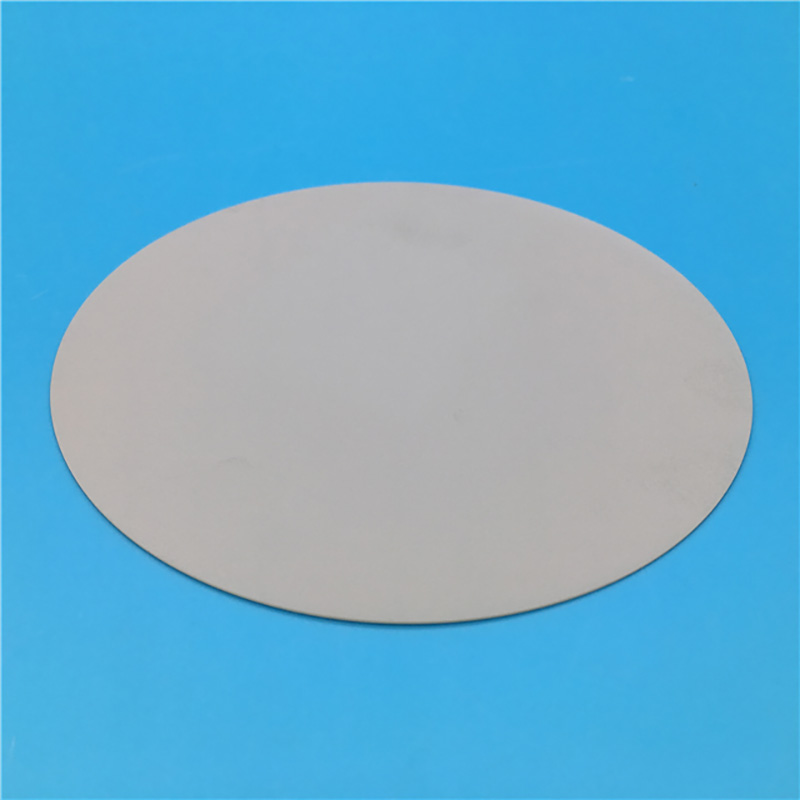Aluminum Nitride – The Unsung Hero of High Performance Materials
Aluminum Nitride (AlN) is a ceramic material with superior thermal conductivity and electrical insulation properties, crystallizing into a wurtzite structure and commonly used as a buffer layer in III-V compound semiconductor and optoelectronic devices.
AlN is an ideal material for dissipating heat and providing electrical insulation, yet converting from alumina requires significant tooling and lead times.
Machinable AlN
Aluminum Nitride is one of the most versatile ceramic materials on the market, used in an array of applications across several fields such as high-powered electronic devices such as heat sinks to dissipate excess heat from components to increase longevity and performance. Furthermore, Aluminum Nitride serves as an exceptional electrical insulator that ensures safety of high voltage electronics that require greater insulation properties.
Machinable AlN is an advanced synthetic ceramic material with superior machinability, making it possible to be machined into complex geometries with ease. Available as green, biscuit or fully dense materials it can be machined using conventional tungsten carbide tools similar to that used on alumina. In addition, its excellent chemical stability makes it more resilient in harsh operating environments than many advanced ceramics.
Additionally, this material offers excellent oxidation resistance and resistance to most acids and alkalis, high temperatures, UV radiation exposure and can withstand corrosion-prone operating environments where other materials would degrade or corrode quickly. As one of the few materials with both excellent electrical insulation properties and thermal conductivity – making it one of the best alternatives to alumina for component manufacturing applications in high power electronic applications.
Pure AlN
AlN has proven itself as an attractive candidate material for use in microelectromechanical systems applications such as high-frequency filters, energy harvesters and ultrasonic transducers [1]. Its piezoelectric properties, low thermal expansion coefficient similar to silicon and wide band gap make AlN an attractive material choice in these applications. Furthermore, AlN remains chemically inert up to 1400 degC so does not react with most liquids or gases such as hydrogen and oxygen that come into contact with it.
AlN is easily machinable in green or biscuit form, enabling tight tolerances to be maintained prior to sintering which densifies it, though this process causes AlN to shrink by 20% which makes maintaining very precise tolerances difficult during machining.
Sintering of pure AlN can lead to impurities of C and O introducing into its gate oxide which, over time, decreases passivation properties and leads to leakage current increases in semiconductor devices – this being particularly problematic in high-power microwave and power transistor applications where oxidation may reduce performance.
Tokuyama Corporation of Japan has successfully created a hybrid ceramic comprised of AlN and boron nitride that provides for easier machining of pure AlN without experiencing issues associated with sintering. Known as Shapal Hi-M Soft, this material can be found in MEMS components that need AlN’s superior mechanical properties (Vickers hardness over 17 GPa) and electrical insulation properties without being as dense.
High Temperature AlN
AlN is an extremely durable material, even at extreme temperatures, making it the perfect material to be used in electronic devices that operate under high voltages and temperatures, such as power transistors and silicon microprocessors.
AlN possesses a high melting point of 2338 degC and excellent corrosion resistance to aluminum and gallium arsenide molten metal, along with low thermal expansion rates – qualities which make it an excellent material choice for electronic applications. Furthermore, AlN has relatively high thermal conductivity for an electrical insulator, significantly enhancing device efficiency.
Due to its non-centrosymmetric wurtzite crystal structure, AlN displays intrinsic piezoelectricity which produces internal polarization charges under strain due to strong ionic bonds between aluminium and nitrogen atoms. Furthermore, AlN boasts excellent chemical stability which makes it suitable for applications operating at high temperature or in hostile environments.
Deposition conditions play a vital role in AlN’s crystalline quality and dislocation density, so understanding their impacts is of vital importance for optimizing growth at high temperatures. Researchers have examined various MOVPE strategies – migration enhancement growth and ammonia pulse growth are two such examples – on dislocation density to optimize growth at this temperature level11,12. In particular, migration enhancement growth reduces parasitic reactions which cause dislocations while ammonia pulse growth may achieve balance between parasitic reaction rates and growth rate11,12
High Temperature Ceramics
Aluminum Nitride stands out as one of the leading High Temperature Ceramic Materials (HTCMs), in that it’s an extremely easy material to machine while providing superior electrical and thermal conductivity properties.
As with other nitrides, AlN crystallizes in a hexagonal lattice structure known as Wurtzite, providing excellent insulation properties with a dielectric constant of around 10-11. Furthermore, this material boasts exceptional mechanical properties: hard and having a Young’s modulus of 395 GPa make it an excellent material for thin film BAW resonator applications.
At temperatures over 1800 degC, this material remains extremely stable with excellent oxidation resistance properties – perfect for aerospace and automotive applications where temperature regulation is critical.
AlN is not as brittle as alumina, though it can still be damaged by sudden shocks and pressure. Tempering can help strengthen its tensile strength and impact resistance while resisting chemical attacks like sulfuric acid and chloride solutions. Unfortunately it’s susceptible to strong UV radiation which may cause discoloration and delamination; additionally it is vulnerable to surface oxidation; though this can be avoided by coating it with aluminum oxide – although this does reduce thermal conductivity significantly.
